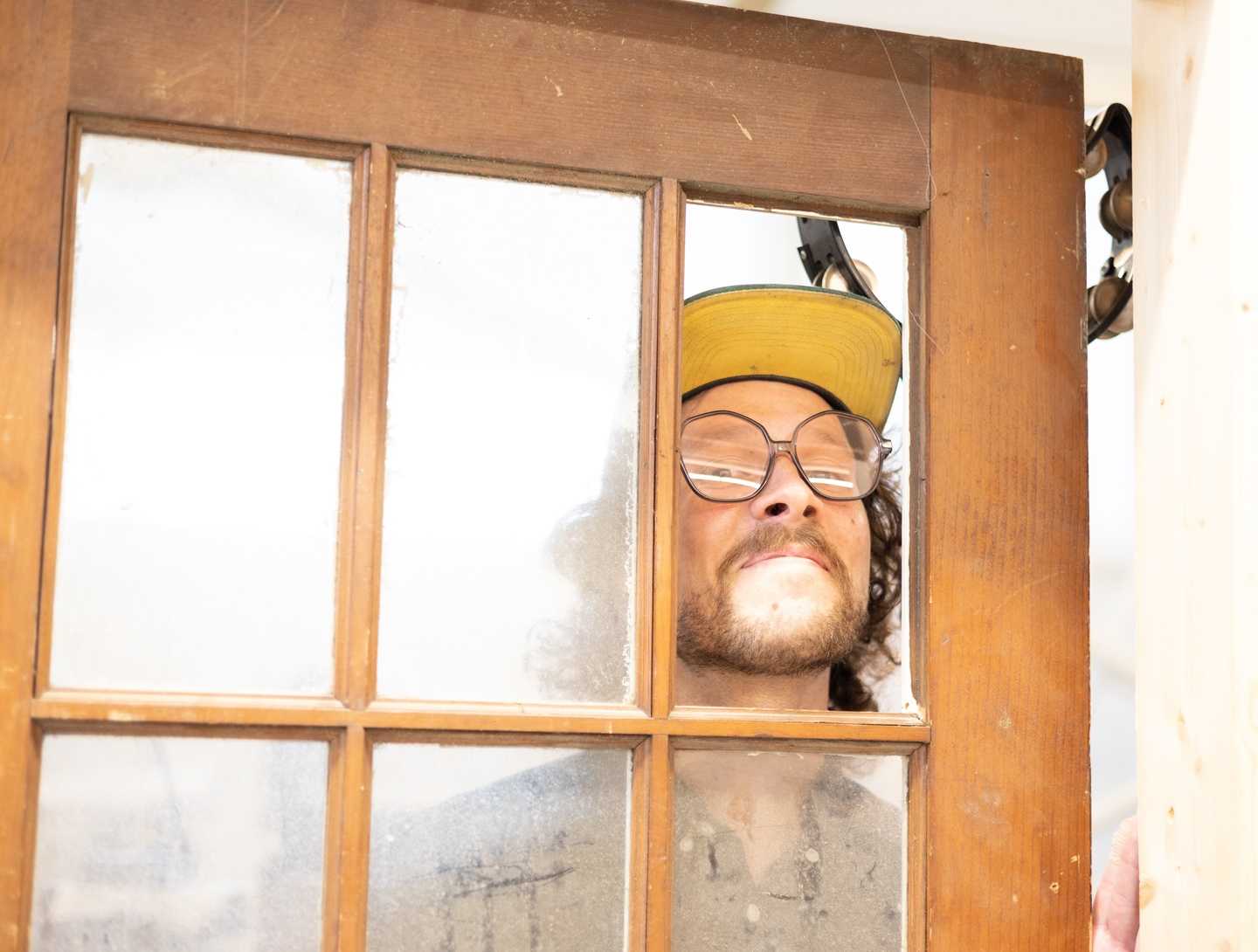Q&A with Alex Braden
Born in Detroit, MI, Alex Braden is a lifelong musician and artist working in sound, installation, and performance. After attaining a BFA in Sound Art he further developed his practice in residence at Vermont Studio Center, VisArts, Rocklands Seattle, and Halcyon Arts Lab. Alex’s work has been featured in Hyperallergic, the Washington Post, SPIN, Noisey, and NPR. He has lectured at the Smithsonian National Gallery of Art and Montgomery College. After spending nearly two decades in Washington DC, he now resides in St. Louis, MO.
Alex Braden, Decanter II: In Defense of Daydreaming, 2023, Sound and mixed media
Alex Braden in his studio (Photo: Caitlin Custer)
Tell us about your project.
It’s an indeterminate, randomized composition. It follows a lot of my previous work where I’ll create a situation where sound can be made, assemble the ingredients, put them out there — but the actual implementation of it is out of my control.
This project has a sculptural element. It’s a four-legged almost-cube frame from pine. It has a ceiling and an elevated platform of sorts. On top of the platform there’s a record player with an arm that slowly rotates, striking electrified strings that are suspended from the ceiling of the structure. There’s a musical pitch to the agitation of the strings, but also hidden speakers that play a randomly–selected sound (from a cache of a few hundred audio files) triggered whenever current passes from one string to another by the stranded copper of the rotating arm.
What’s your process like when you’re creating?
I work with sound always, sculpture a lot, and installation usually.
A lot of my work – I’ll take analog technologies, sound-making technologies that I’m familiar with from my music practice and rework them into a situation where they’re functioning, but in a different way than they were intended to function.
What’s it like working with sound as a material?
I’ve been thinking a lot about how sound as a phenomenon, not an object. It’s been interesting to figure out how to talk about my work, because as an installation, there is an object there that you can see. But the work is actually the pressure changes surrounding us and what hits our ears and then what our brains bounce back.
I’m realizing I do a lot in celebration of the soft, squishy humanity – like physical, bodily humanity. I think a lot about the absurdity of existence, and I like the fact that the listener literally has to be there for sound to happen. Sound doesn’t exist without the ear. We define sound according to what the human body can do. It’s a human idea. The squirrel might hear the tree falling in the forest, but at a frequency we can’t hear, so it’s not considered sound.

Braden in his studio. (Photo: Caitlin Custer)
How did you get into music and sound in the first place?
One of the oldest photos I have of myself is when I’m two-and-a-half years old, in a tuxedo, sitting at my grandparents’ piano. In a lot of ways, music was handed to me by my environment. I don’t know how much of it was nurtured and how much of it was natural. I started studying piano when I was four — I was learning to read English while I was learning to read music. I did piano for 12 years, took up jazz guitar when I was a teenager, then bass, drums, all the rock instruments. I played in bands and toured for a while.
I went to college as a jazz guitar major. I did that for a semester. I switched to English for a while. Then I took an entry-level design class and realized that I really liked the art school as a place where I can keep doing music. A professor convinced me to try making non-musical sound and I really dug it. I felt liberated by it, by getting away from sheet music. In sound, I had a chance to use everything I knew but also throw it all out.
Ok, so why WashU?
Really the people. Everyone was so engaging and responsive. At WashU, I knew I was going to be in a cohort of about a dozen people, all working in different areas. I wanted to expand. And I felt that being among people who were working in a variety of mediums, getting feedback from different perspectives would be beneficial.
I also really dug St. Louis from the jump.
What do you hope people experience when they hear your work?
Having these things be long-form and randomly generated inspires an interaction with the work. It’s closer to how I want to think about sound: about being around other people, about reconnecting with our bodies.
I’m not trying to communicate didactically — I don’t have a manifesto. For me, part of the final piece of work is the listener. I don’t really know what the work is until someone else hears it. It’s one thing for me, something else for you, and something different for them.
Alex Braden reflected on the scope of his practice, time at WashU, and thesis project leading up to the MFA in Visual Art thesis exhibition. This is an edited transcript of Braden’s words as told to Caitlin Custer.



